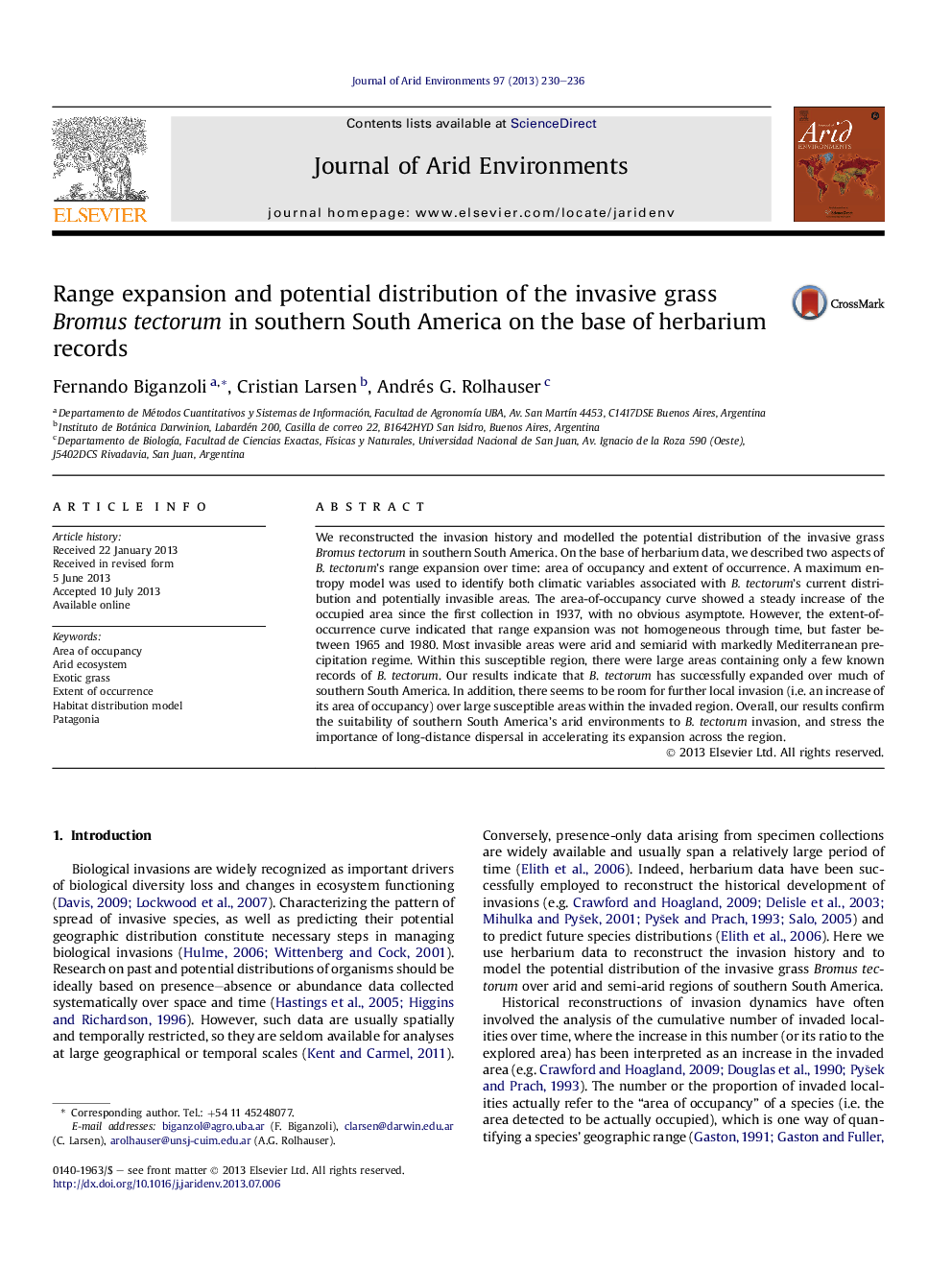| Article ID | Journal | Published Year | Pages | File Type |
|---|---|---|---|---|
| 6303581 | Journal of Arid Environments | 2013 | 7 Pages |
Abstract
We reconstructed the invasion history and modelled the potential distribution of the invasive grass Bromus tectorum in southern South America. On the base of herbarium data, we described two aspects of B. tectorum's range expansion over time: area of occupancy and extent of occurrence. A maximum entropy model was used to identify both climatic variables associated with B. tectorum's current distribution and potentially invasible areas. The area-of-occupancy curve showed a steady increase of the occupied area since the first collection in 1937, with no obvious asymptote. However, the extent-of-occurrence curve indicated that range expansion was not homogeneous through time, but faster between 1965 and 1980. Most invasible areas were arid and semiarid with markedly Mediterranean precipitation regime. Within this susceptible region, there were large areas containing only a few known records of B. tectorum. Our results indicate that B. tectorum has successfully expanded over much of southern South America. In addition, there seems to be room for further local invasion (i.e. an increase of its area of occupancy) over large susceptible areas within the invaded region. Overall, our results confirm the suitability of southern South America's arid environments to B. tectorum invasion, and stress the importance of long-distance dispersal in accelerating its expansion across the region.
Related Topics
Physical Sciences and Engineering
Earth and Planetary Sciences
Earth-Surface Processes
Authors
Fernando Biganzoli, Cristian Larsen, Andrés G. Rolhauser,
